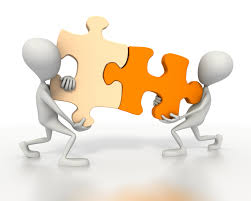记忆方法
记忆单词“connect”的方法是将它分解成两个部分:“con”和“nect”。首先,记住“con”是“connect”的前缀,暗示着紧密或一起的概念。然后,想象“nect”和“net”谐音,像是一个网络连接的过程。将这两个部分结合起来,就像是一个网络连接被紧密地织在一起,这样就形成了“connect”的意思,即连接。
以上内容由AI生成, 仅供参考和借鉴
中文词源
connect 连接
con-, 强调。-nect, 连接,词源同net, annex.
英语词源
- connect
-
connect: [17] Etymologically, connect means ‘tie together’. It comes from Latin connectere, a compound verb formed from the prefix com- ‘together’ and nectere ‘bind, tie’ (whose past participial stem, nex-, is the ultimate source of English nexus [17]). The derived noun connection first appeared, in the spelling connexion, in the 14th century.
=> nexus - connect (v.)
- mid-15c., from Latin conectere "join together" (see connection). Displaced 16c. by connex (1540s), from Middle French connexer, from Latin *connexare, a supposed frequentative of conectere (past participle stem connex-). Connect was re-established 1670s.
A similar change took place in French, where connexer was superseded by connecter. Meaning "to establish a relationship" (with) is from 1881. Slang meaning "get in touch with" is attested by 1926, from telephone connections. Meaning "awaken meaningful emotions, establish rapport" is from 1942. Of a hit or blow, "to reach the target," from c. 1920. Related: Connected; connecting; connectedness.
权威例句
- 1. Two cables connect to each corner of the plate.
- 两条电缆连到金属板的每个角上。
- 2. The fallopian tubes connect the ovaries with the uterus.
- 输卵管连接着卵巢和子宫。
- 3. You can connect the machine to your hi-fi.
- 你可以把机器连在高保真音响上。
- 4. Connect the hose to the tap and turn on the tap.
- 把水管接在龙头上,打开水龙头.
- 5. The police have sufficient evidence to connect the suspect with the explosion.
- 警察有充足的证据认为该疑犯与爆炸案有关.
